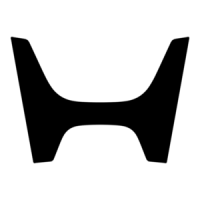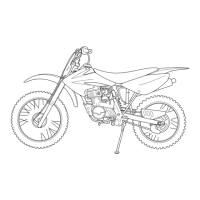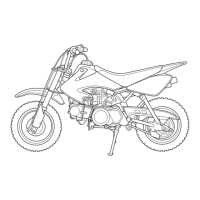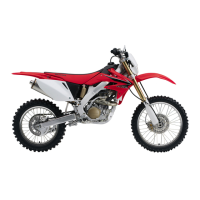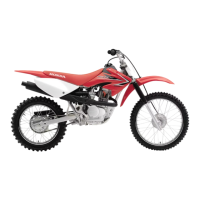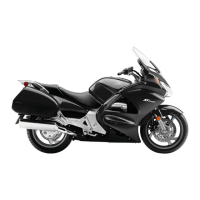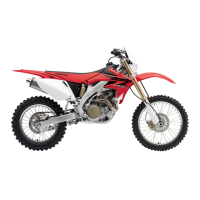Rear Suspension Adjustments
4. Calculate the race sag dimension.
To do this, subtract the
loaded with rider
dimension (step 3) from the unloaded
dimension (step 2).
Standard Race Sag:
100 mm (3.9 in)
Adjust spring pre-load as necessary to obtain
the desired handling results.
Decreasing the race sag dimension (example:
90 mm, 3.5 in) improves turning ability for
tight terrain at the cost of slightly reduced
straight line stability.
Increasing the race sag dimension (example:
110 mm, 4.3 in) may improve stability on
faster terrain with less turns, but will reduce
turning performance slightly and may upset
the balance between the front and rear
suspension, producing a harsher ride. This
will happen if the adjustment shifts the
effective wheel travel toward the more
progressive end of its range.
5. Measure the
loaded without rider dimension.
Do this with your CRF set at the standard race
sag.
Rear Suspension Race Sag
Setting the proper race sag (ride height) is very
important for competition use.
Race sag refers to the amount of rear wheel travel
used by your CRF at rest, ready to ride, with you
on the seat. As a general rule of thumb, the race
sag dimension should be about one-third of the
maximum travel.
On your CRF, ride height is changed by
adjusting the rear suspension spring pre-load.
Spring Pre-load & Race Sag Adjustment
The following adjustment procedure establishes
the correct starting point for any suspension
tuning — the proper rear spring pre-load
adjustment for your specific needs.
Your CRF should be at normal racing weight,
including fuel and transmission oil. You should
be wearing all your normal protective apparel.
You will need two helpers.
To calculate the proper adjustment, it is necessary
to measure between two fixed points — from the
centre of the rear fender mounting bolt to the
centre of the chain adjuster lock nut as illustrated
here — for three different situations:
unloaded: motorcycle on an optional workstand
with rear suspension fully extended, no rider.
loaded with rider: motorcycle on ground, with
rider.
loaded without rider: motorcycle on ground,
without rider.
1. Support your CRF on an optional workstand
or equivalent with the rear wheel off the
ground.
2. Measure the
unloaded dimension.
3. Measure the
loaded with rider dimension.
Remove the workstand. With two helpers
available, sit as far forward as possible on
your CRF’s seat, wearing your riding apparel.
Ask one helper to steady your CRF perfectly
upright so you can put both feet on the pegs.
Bounce your weight on the seat a couple of
times to help the suspension overcome any
situation and settle to a good reference point.
Ask the other helper to measure the
loaded
with rider
dimension.
Example:
Unloaded
= 600 mm (23.6 in)
– Loaded = 500 mm (19.7 in)
Race Sag = 100 mm (3.9 in)
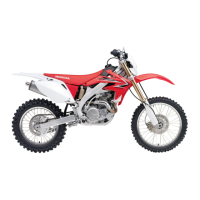
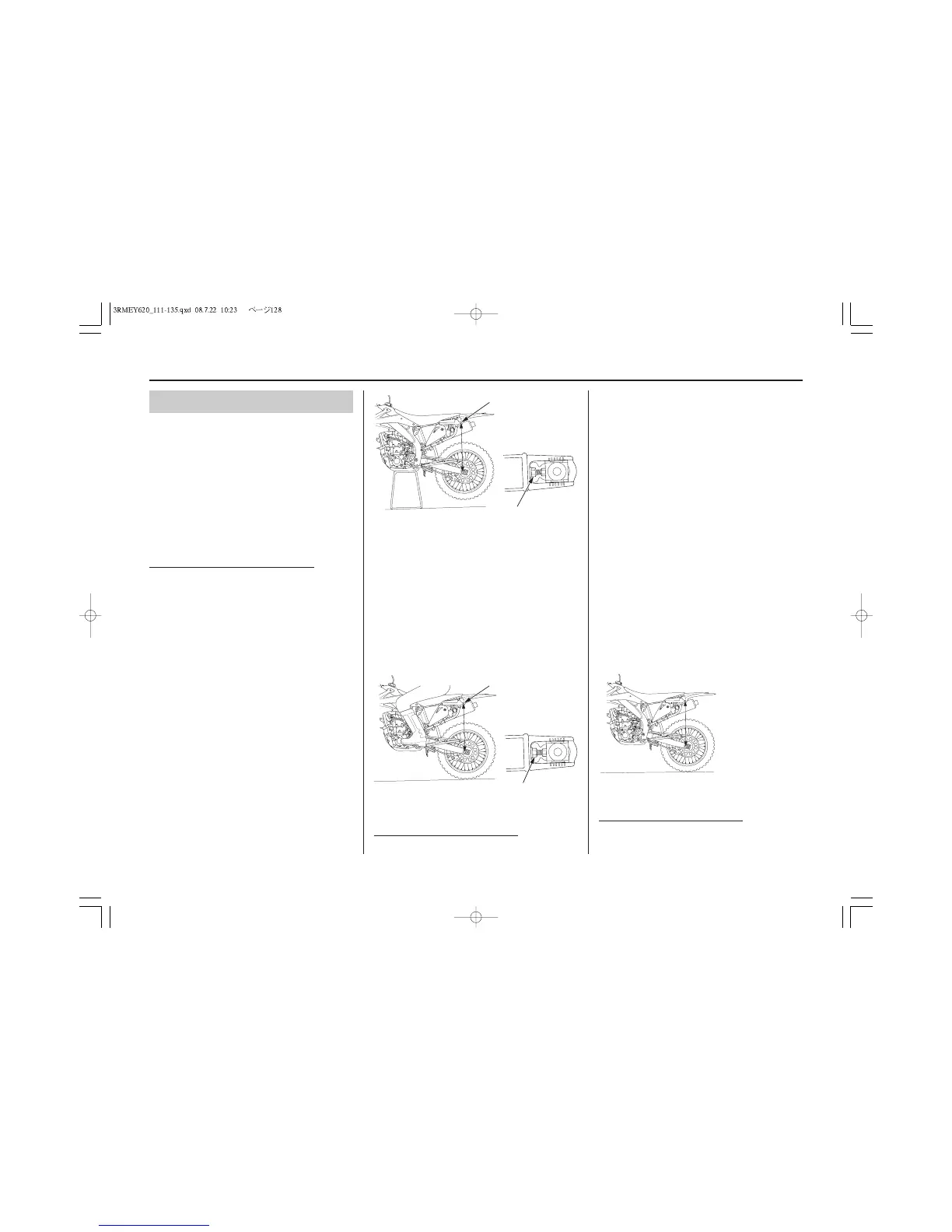